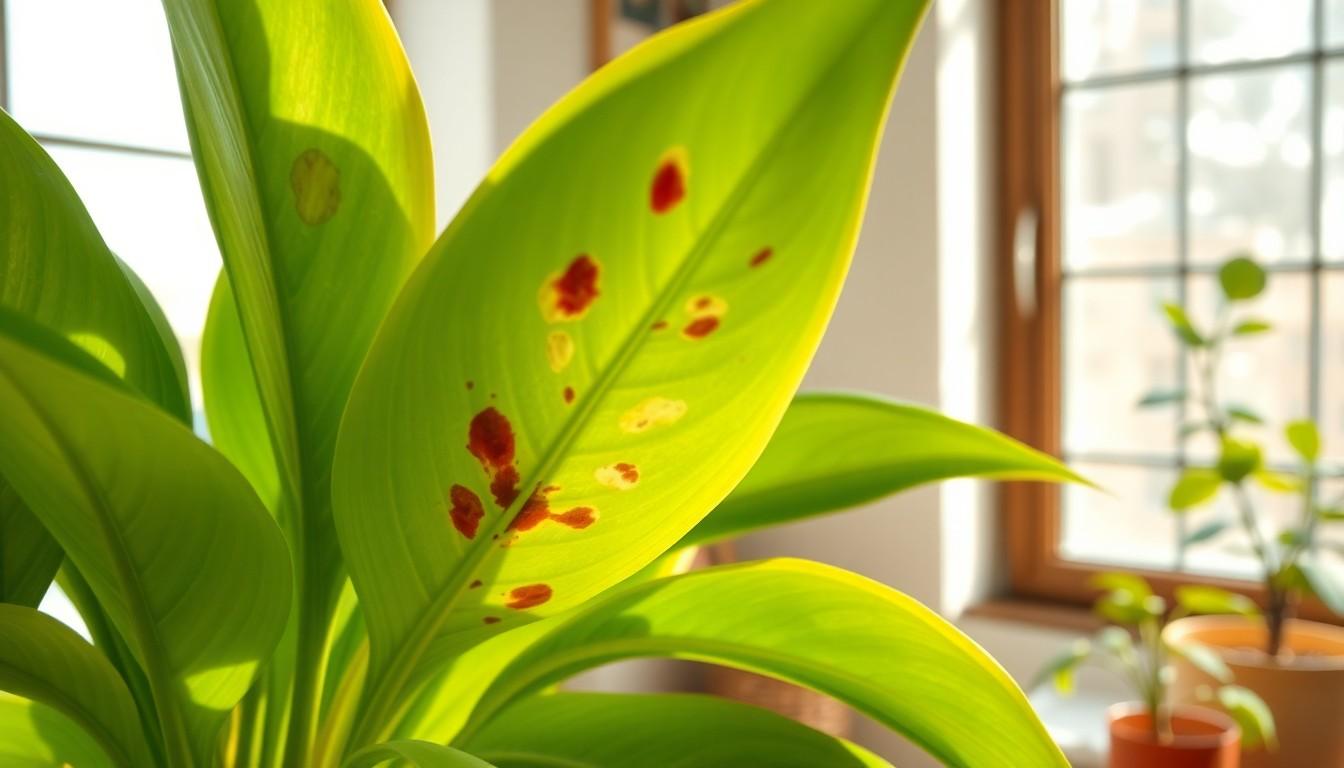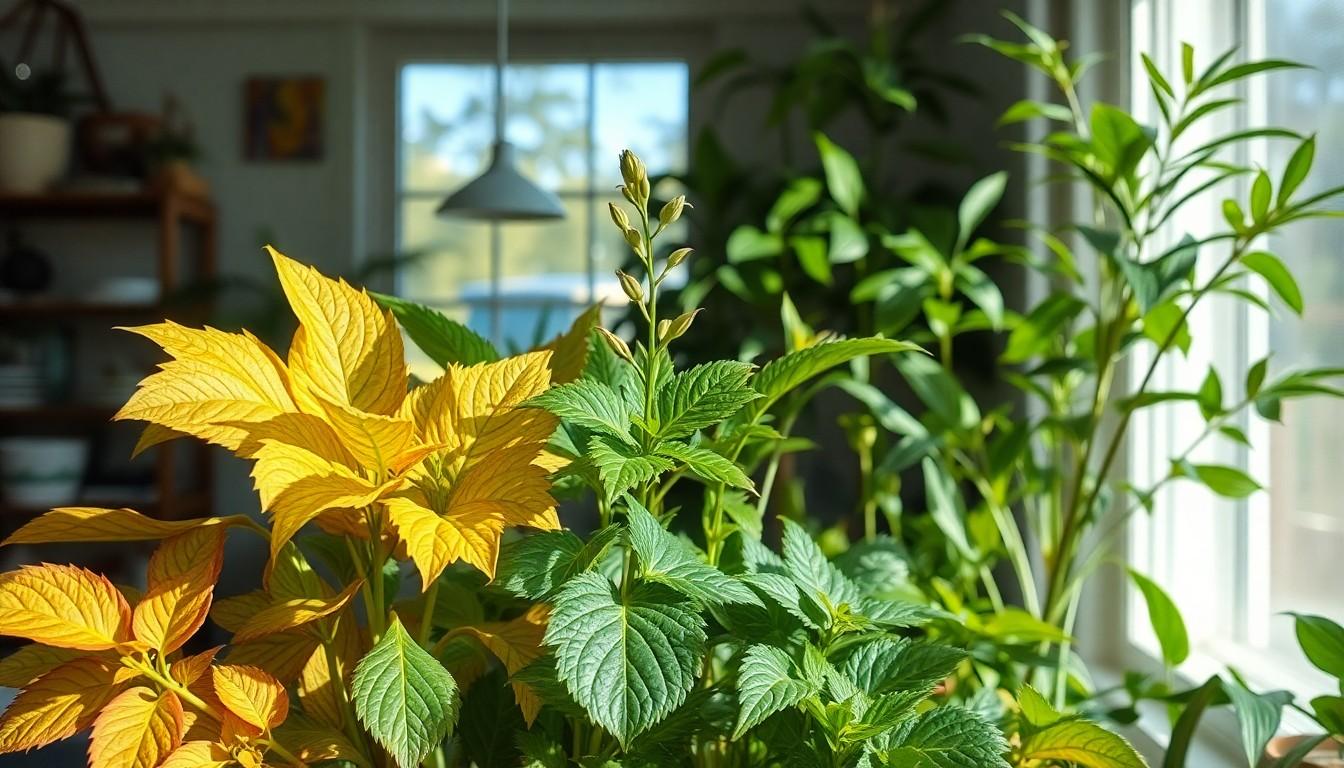Phone:
(701)814-6992
Physical address:
6296 Donnelly Plaza
Ratkeville, Bahamas.

House plants can be the pride of any home, transforming dull corners into vibrant green havens. But what happens when those leafy companions start looking a little under the weather? Just like humans, plants can catch a variety of diseases, and trust us, they don’t have the luxury of a cozy blanket and chicken soup.
From pesky pests to mysterious leaf spots, house plant diseases can sneak up on even the most diligent plant parent. Understanding these ailments is crucial for keeping those green beauties thriving. So grab your magnifying glass and put on your detective hat—it’s time to uncover the secrets of house plant health. After all, a happy plant means a happier home, and who wouldn’t want their little green friends to flourish?
House plants are susceptible to a range of diseases that can affect their health and appearance. Fungal infections often present symptoms like leaf spots, wilting, or rot. Bacterial diseases lead to dark patches on leaves and cause a slimy texture upon touch.
In addition, viral infections may stunt plant growth and create mosaic patterns on leaves. These diseases stem from various factors, including poor drainage, overwatering, or inadequate light. Proper sanitation plays a crucial role in preventing disease spread. Cleaning pots and tools helps minimize exposure to pathogens.
Common pests like aphids, spider mites, and mealybugs further complicate the situation. They can transmit diseases, weakening plant defenses. Monitoring plants regularly aids in detecting these pests early, allowing for timely treatment.
Environmental factors contribute to plant health, influencing disease prevalence. Low humidity encourages issues like powdery mildew, while overly dry soil can trigger stress. Maintaining optimal growing conditions promotes plant vitality and reduces disease occurrence.
Understanding disease symptoms enables prompt action. Isolating affected plants prevents further spread to healthy ones. Treatment options vary, ranging from chemical fungicides to natural remedies like neem oil.
Adopting preventative measures proves beneficial. Quarantining new plants before introducing them to existing collections helps identify potential problems upfront. Regularly inspecting leaves and soil enhances a plant owner’s ability to address threats effectively.

Identifying symptoms of house plant diseases is crucial for maintaining plant health. Some specific symptoms signal underlying issues.
Leaf discoloration often indicates distress. Yellowing leaves suggest overwatering, while browning edges may result from underwatering or high salinity. Dark spots could imply a fungal infection, which spreads quickly without intervention. Additionally, pale leaves can indicate inadequate light exposure. Regular inspection helps catch these changes early.
Wilting and drooping signify significant stress in house plants. A drooping appearance might result from insufficient water or nutrient deficiencies. Overwatering can also lead to wilting due to root rot. Plants expel excess moisture when under stress, leading to droopy leaves. Proper hydration and monitoring soil moisture levels play vital roles in prevention.
Stunted growth indicates that a plant struggles to thrive. Growth issues may arise from poor soil quality or nutrient deficiencies, impacting overall health. Root-bound conditions keep plants from absorbing adequate nutrients and water. Additionally, insufficient light stunts growth by limiting photosynthesis. Regular repotting and soil enrichment support robust growth and vitality.
House plants can suffer from several diseases, significantly affecting their health and appearance. Understanding these diseases allows for timely intervention.
Fungal infections pose a common threat to house plants. Symptoms often include leaf spots and powdery mildew. Factors such as high humidity and poor air circulation exacerbate these infections. Treatment typically involves removing affected leaves and applying fungicides. Neem oil serves as a natural option to combat fungi. Proper watering techniques can also minimize moisture buildup, preventing fungal growth effectively.
Bacterial infections can lead to wilting and blackened leaf edges. These pathogens thrive in warm, humid conditions. Notably, overwatering creates a breeding ground for bacteria. To manage infections, isolate affected plants immediately. Treatment may include copper-based bactericides to halt progression. Ensuring good drainage and avoiding crowded conditions improves plant resilience against bacterial threats.
Viral infections often manifest as mottled leaves and stunted growth. These viruses can spread easily through contaminated tools or insect vectors. Infected plants frequently display yellowing patterns on leaves, indicating viral stress. Quarantine infected specimens to prevent further spread. Unfortunately, there are no effective cures for viral infections; removal of affected plants remains the best option. Regular monitoring can help detect these issues early, enabling proactive management strategies.
Effectively managing house plant diseases requires a multi-faceted approach. Ensuring proper care and attention plays a crucial role.
Overwatering often leads to root rot. Drainage holes in pots help excess water escape. Choosing appropriate watering schedules based on plant type prevents diseases. Regularly checking soil moisture ensures plants receive adequate hydration without saturation. Waiting until the top inch of soil feels dry reduces the risk of fungal infections. Keeping watering tools clean stops the spread of bacteria.
Healthy soil promotes strong plant growth. Using high-quality potting mix provides essential nutrients. Regularly replacing soil every 12 to 18 months revitalizes nutrients. Checking pH levels helps maintain optimal conditions for growth. Adding organic matter, such as compost, enhances soil texture and fertility. Ensuring proper drainage is critical to prevent waterlogging.
Identifying pests early prevents extensive damage. Regularly inspecting leaves and stems reveals infestations. Natural remedies, like insecticidal soap, efficiently control pest populations. Employing beneficial insects, such as ladybugs, offers a biological control method. Regular cleaning of plant leaves removes dust and potential pests. Quarantining new plants protects existing ones from disease threats.
Maintaining the health of house plants is crucial for a vibrant home environment. Recognizing the signs of disease early can make all the difference in treatment success. By understanding the various diseases that affect plants and implementing preventative measures, plant owners can effectively protect their greenery.
Regular inspections and proper care are essential for fostering strong plants. Whether it’s adjusting watering techniques or enhancing soil quality, these steps contribute to a thriving indoor garden. Ultimately, a proactive approach ensures that house plants not only survive but flourish, bringing beauty and life into any space.